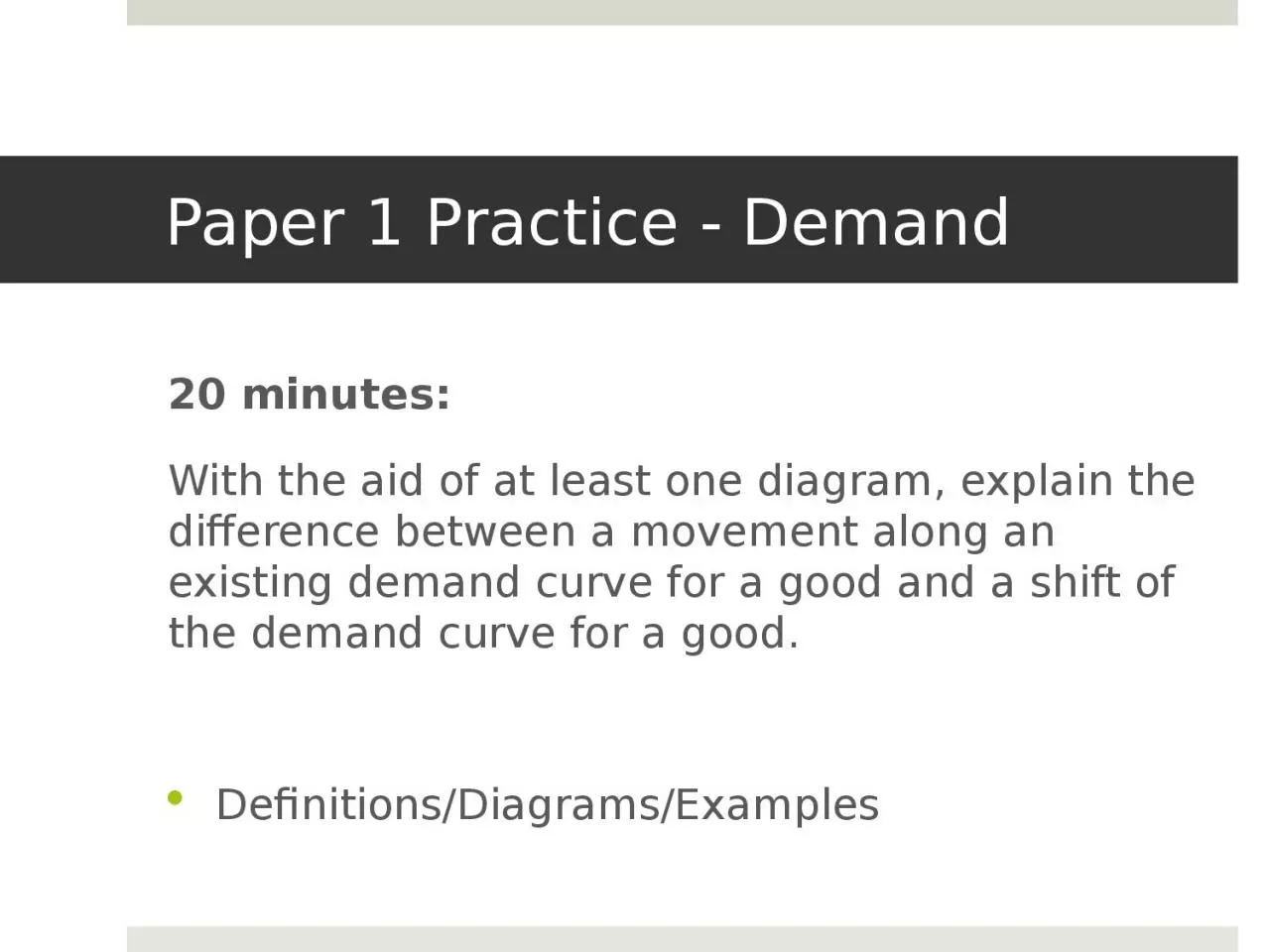

20 minutes With the aid of at least one diagram explain the difference between a movement along an existing demand curve for a good and a shift of the demand curve for a good DefinitionsDiagramsExamples ID: 1028412
Download Presentation The PPT/PDF document "Paper 1 Practice - Demand" is the property of its rightful owner. Permission is granted to download and print the materials on this web site for personal, non-commercial use only, and to display it on your personal computer provided you do not modify the materials and that you retain all copyright notices contained in the materials. By downloading content from our website, you accept the terms of this agreement.
1. Paper 1 Practice - Demand20 minutes:With the aid of at least one diagram, explain the difference between a movement along an existing demand curve for a good and a shift of the demand curve for a good.Definitions/Diagrams/Examples
2. Supply
3. SupplyHow much of a product are sellers willing to make? Supply tells us the quantity of a product firms are willing and able to produce at different prices.
4. SupplyWhat is the goal of firms?To get the largest profit possible
5. SupplyPrice of Chocolate Bars ($)Quantity of chocolate bars supplied (per week)56004500340023001200
6. Supply
7. Law of SupplyAs the price of a good increases, the quantity supplied increasesAs the price of the good falls, the quantity supplied falls
8. Change in Quantity Supplied
9. Why does the supply curve slope upward?Higher prices mean higher profits so firms have a reason to make more of a product.Lower prices mean lower profits so firms have a reason to make less of a product.
10. Non-price determinants of SupplyThings other than price that can influence supply:Costs of factors of productionTechnology Prices of related goodTaxesSubsidies Number of FirmsShocks
11. Costs of factors of production
12. Technology
13. Prices of Related Goods: Competitive Supply Competitive Supply – Some goods need the same resources in order to be produced. This means that producing one good means producing less of the other.Example: Corn/Wheat
14. Prices of Related Goods:Competitive Supply OR
15. Prices of Related Goods:Competitive Supply
16. Prices of Related Goods: Joint Supply Joint Supply – Some goods are always made together at the same time. This means that producing more of one good means producing more of the other too.Example: Whole milk – skim milk and butterAND
17. Prices of Related Goods: Joint Supply
18. Prices of Related Goods: Taxes
19. SubsidiesA subsidy is a payment made by the government to a firm in exchange for making a product. Governments use subsidies to increase the incomes of producers or encourage the increase in the production of a good.
20. Subsidies
21. Number of Firms
22. ShocksShocks are sudden, unpredictable eventsExamples: Bad weather that destroys crops, war, natural or man-made disasters.These almost always cause a decrease in supplySHOCK
23. Draw the below changes in supplyThe number of firms in the industry producing product A decreases.The price of oil, a key input in the production of product A, increases. The government gives a subsidy on each unit of A produced.The price of product B falls, and B is in competitive supply with A. (Draw two graphs)The price of product B increases, and B is in joint supply with A. (Draw two graphs)A new technology is adopted by firms in the industry producing A.